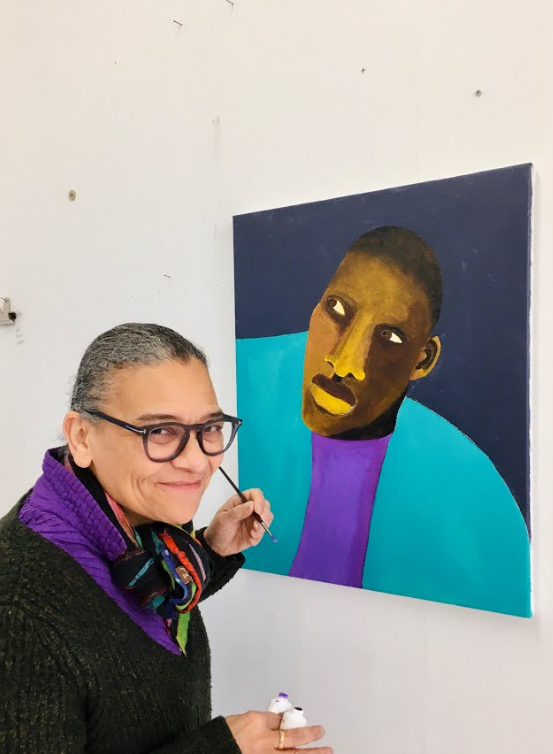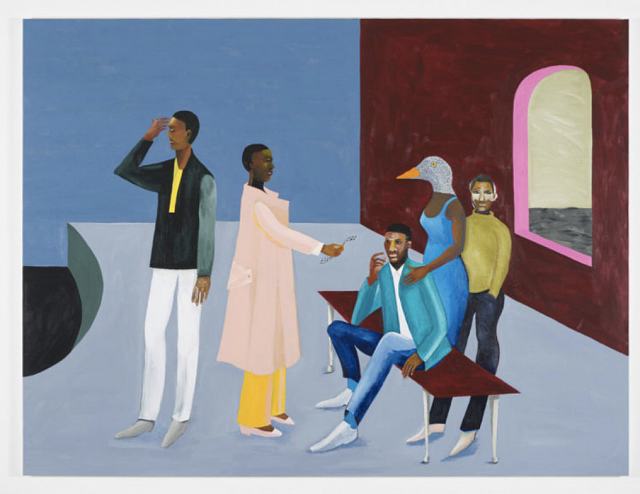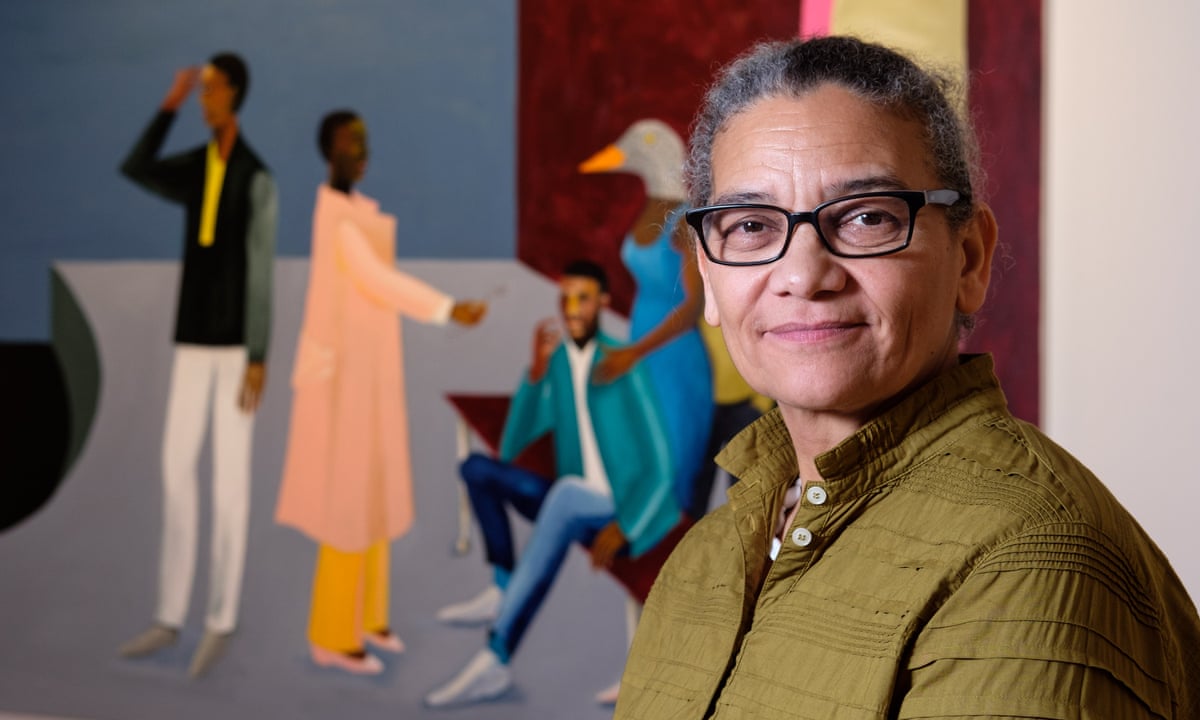By Panagiota Katsaveli,
Giving a definition for the word “art” is one of the most difficult tasks, and surely there is no definite answer we can give about what constitutes art. One characteristic we can all agree on has to be the idea that art is a human activity that involves creative or imaginative talent, as well as a great way of expressing different aspects of the human experience, and even ourselves. Humans use art to create beautiful outcomes, which not only satisfy the eye but also feed the soul and have the power to transmit ideas. However, the lack of interest the public shows regarding art can lead to many individuals losing the chance the transmit their great ideas to the world. One such instance, in my opinion, is the great British artist named Lubaina Himid, whose work we are going to explore in this piece!
So, who is the person behind the name Lubaina Himid? Lubaina Himid is a female British painter, born in Zanzibar in 1954, who has dedicated her long career to uncovering marginalized and silenced histories, personalities, and important cultural moments. Her first serious engagement with art was in college when she studied Theatre Design at Wimbledon College of Art; she picked this discipline because of the connections it bore with radical politics and, to be more specific, with Black politics. Afterward, she went on to receive her MA in Cultural History from the Royal College of Art. Himid currently resides and works in Preston, United Kingdom, and she is a professor at the University of Central Lancashire.

In 2017, she was awarded the Turner Prize for her incredible work, and she was made a CBE for her contributions to art in the 2018 Queen’s Birthday Honors. Fun fact, she is the first black woman –and the oldest person at the age of 63– ever to win the Turner. As she stated, it was a bittersweet honor because “I knew very definitely, in the way that you do not necessarily if you are 45, that I had more years behind me than in front. You could think, if you won it at 45, that you might have the same amount of time again to try things, to fail, to try things again. To live fast and loose and have big parties. And I suppose at 63 I thought: ‘Well, at the best, I have probably got 20 years of making’”.
Even though the Greek audience might not be familiar with Lubaina Himid as an artist, she has been extensively exhibited in the United Kingdom and other places around the world. Some of her solo exhibitions have been: The New Museum, New York (2019); Frans Hals Museum, Haarlem, The Netherlands (2019); ‘Gifts to Kings’, MRAC Languedoc Roussillon Midi-Pyrénées, Sérignan, France (2018); ‘Navigation Charts’, Spike Island, Bristol (2017); ‘Invisible Strategies’, Modern Art Oxford (2017); ‘The Truth Is Never Watertight’, Badischer Kunstverein, Karlsruhe, Germany (2017). Moreover, some significant group exhibitions she has taken part in include: Glasgow International (2018); ‘We Do Not Need Another Hero’, Berlin Biennale, Berlin (2018); ‘The Place is Here’, Nottingham Contemporary (2017); ‘Keywords’, Tate Liverpool (2014); and ‘Burning Down the House’, Gwangju Biennale (2014). Lubaina Himid: Workshop Manual, a monograph, was published in January 2019 (Koenig Books). As an artist, she is not just concerned with the progress of her profession. In fact, she has produced notable group exhibits, such as ‘The Thin Black Line’ at the Institute of Contemporary Arts, London (1985), which was revisited in the exhibition ‘Thin Black Line(s)’ at Tate Britain (2011-12).
The most important recognition she has probably received during her career has been her exhibition at Tate, London, which is open for the audience from November 25th to July 3rd, 2022. In this exhibition, she has added a theatrical element to showcase both recent works and selected highlights of her artistic journey. Her work will be presented with a sonic element composed by her close friend and collaborator, Magda Stawarska-Beavan. She discusses issues of everyday life, and she always desires the audience to join the party, to be active!

Himid is a talented individual who does not limit herself to certain forms or topics but gives herself the opportunity to experiment with and explore a variety of them. She usually creates paintings, drawings, prints, and installations; her painting surfaces are various, such as ceramic and wood, which often produces objects with a performative potential intended to be encountered in space. Her work concerns her heritage and is influenced by two recurrent aspirations: the development of a conversation with an audience, and placing a value, as she admits, to “the contribution black people have made to cultural life in Europe for the past several hundred years”. In addition, she is invested in gender matters, and to be precise, she is deeply engaged with the issue of the lack of representation of women of Black and Asian descent in the art world. That is exactly why she has committed herself to showing the work of underrepresented contemporaries.
After taking this journey into the amazing life and work of Lubaina Himid, it becomes crystal clear that she is a star and the entire world is her show. As an artist, she does not solely care about showcasing one aspect of the human experience or one type of human being. On the contrary, she is interested in making every marginalized community feel seen and heard through her artwork, especially black individuals and the effects of white privilege. Getting familiar with her pieces and the meaning behind them can only enhance your understanding of others, to enhance your sense of empathy.
References
- Lubaina Himid: ‘The beginning of my life was a terrible tragedy’, theguardian.com, Available here
- Lubaina Himid, wikipedia.org, Available here




